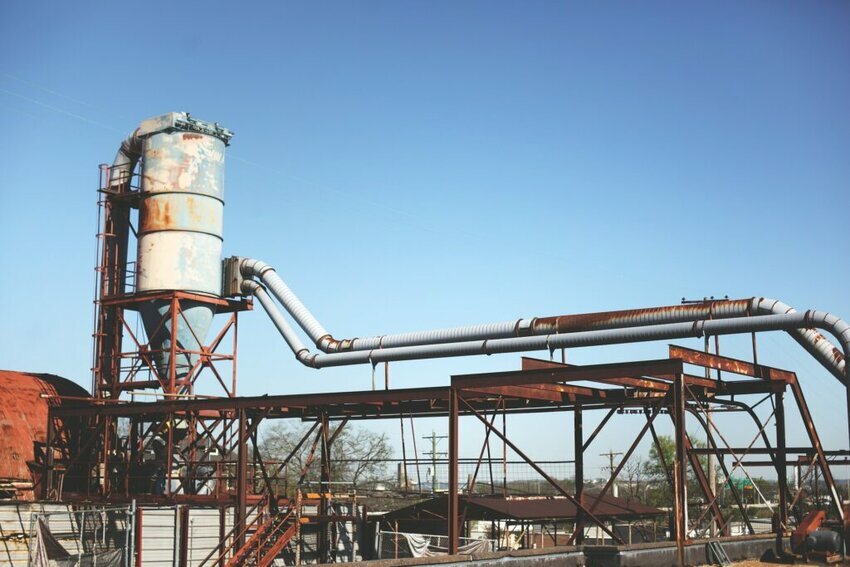 Pixaby: industrial plant
Pixaby: industrial plantTata Steel Limited is based in India and operates worldwide, supplying as much as 34 million tonnes of crude steel capacity. It is in 26 countries and has significant operations in the Netherlands and the United Kingdom. It employs more than 80,000 people. Steel, of course, is critical to the construction and automotive industries. Still, it is now central to the renewables sector and is used to produce solar panels, wind turbines, hydroelectric dams, and electric vehicles.
But the industry generally accounts for 7%-9% of the world's CO2 emissions. Because it is difficult to electrify, the sector is considered “hard-to-abate." Specifically, metallurgical coal and iron oxide produce steel in a so-called Blast Furnace, which accounts for 70% of all steel made worldwide. Green hydrogen can decarbonize the industry; however, its price must drop.
“Tata Steel is committed to reducing its carbon footprint in production and through the life cycle of the product,” the company says. It has a decarbonization roadmap that includes recycling steel, adopting of best available technologies and improvements in waste heat recovery, and dehumidification of hot blast furnaces.
It also plans to improve the quality of raw materials such as iron ore and coal to reduce emissions while increasing its share of renewable energy to power its operations. It is designing or implementing 150 megawatts of such power projects, including nearly 12 MW of solar at its facilities in Thailand. Importantly, it plans to gradually phase out its Blast Furnaces and replace them with Direct Reduced Iron technology and electric furnaces in the Netherlands.
“By 2026, we expect to have completed detailed engineering, placement of orders, and commencement of construction on the project,” it says. And it has plans to set up Electric Arc Furnaces in India to process scrap into steel. It adds that producing steel from recyclable scrap has a lower carbon footprint than iron ore. It aims to have zero waste using reduce, reuse, and recycle principles tied to the circular economy.
Importantly, it plans to use more hydrogen in the steelmaking process — up to 5 tonnes per day in a pilot project in India. Net zero is the ultimate goal, especially in Europe with more aggressive climate goals.
“We are cognizant of the fact that both transition and physical risks associated with climate change will have an impact on our organization’s operations, supply chain, and financial planning,” the company says. “Stringent climate laws and regulations for accelerating the transition to a low-carbon economy, technology disruptions, and shifting customer preferences to alternative materials may adversely impact profit margins, more so if our performance in abatement is inferior to our peers.”
Germany’s Thyssenkrupp, Japan’s Nippon Steel, and Sweden’s SSAB are already making carbon-free steel. And Australia’s Fortescue Metals Group wants to generate 45,000 megawatts of green hydrogen by 2027 — enough hydrogen to power 45 average-sized steel mills. Meanwhile, Nucor says that its proprietary brand — Econiq — is carbon-neutral and mass-produced, serving the automotive, construction, and renewable industries. Its first customer is General Motors.
Tata Steel says it aligns its climate goals with the countries where it does business. In Europe, it aims to reduce steelmaking carbon emissions by 30% to 40% by 2030 and to make its processes more sustainable while producing carbon-neutral steel by 2050 -- all tuned to the European Commission’s goal: 55% cut in CO2 by 2030 using a 1990 baseline.
Similarly, it aspires to reduce its carbon intensity in India, considering the country’s growth ambitions, expected steel consumption, and evolving policy landscape.
India now relies on coal to fuel 55% of its energy mix, but it has a long-term blueprint to procure much more renewable energy. Specifically, it plans to secure 450 gigawatts of wind, solar, and hydro by 2030 and to hit net zero by 2070. It needs an estimated $160 billion annually to do this.
India is a developing nation with the potential to expand and flourish. Getting there will require more steel production and use for roads, buildings, and power projects. Therefore, it is critical to green the steel-making process.
“Governments can create an environment to develop this technology,” Rajiv Mangal, former president of Tata Steel in India, told reporters at a recent conference hosted by the International Renewable Energy Agency in Abu Dhabi. “If they put a price on carbon, it would happen.” Right now, the standards to make steel using green hydrogen differ depending on geography, increasing the cost of production. With standardization, the market may support a small premium.